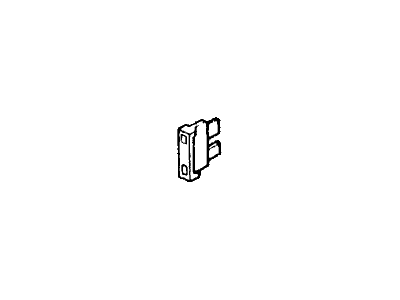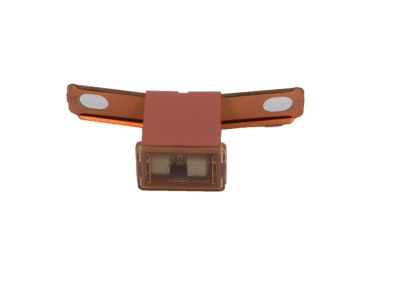×
- Hello
- Login or Register
- Quick Links
- Live Chat
- Track Order
- Parts Availability
- RMA
- Help Center
- Contact Us
- Shop for
- Acura Parts
- Acura Accessories

My Garage
My Account
Cart
Genuine Acura Integra Fuse
Circuit Fuse- Select Vehicle by Model
- Select Vehicle by VIN
Select Vehicle by Model
orMake
Model
Year
Select Vehicle by VIN
For the most accurate results, select vehicle by your VIN (Vehicle Identification Number).
32 Fuses found
Acura Integra Mini Fuse (20A)
Part Number: 98200-42000$0.91 MSRP: $1.27You Save: $0.36 (29%)Ships in 1-3 Business DaysAcura Integra Car Bolt Down Fuse
Part Number: 38212-SM4-003$9.94 MSRP: $13.87You Save: $3.93 (29%)Ships in 1-3 Business DaysAcura Integra Block Fuse (100A)
Part Number: 38218-SM4-003$8.91 MSRP: $12.43You Save: $3.52 (29%)Ships in 1-3 Business DaysAcura Integra Fuse Mini (10A)
Part Number: 98200-41000$0.97 MSRP: $1.35You Save: $0.38 (29%)Ships in 1-3 Business DaysAcura Integra Blade Fuse (20A)
Part Number: 38221-SNA-A61$2.71 MSRP: $3.79You Save: $1.08 (29%)Ships in 1-3 Business DaysAcura Integra Block Fuse (30A)
Part Number: 38231-S04-003$8.59 MSRP: $11.98You Save: $3.39 (29%)Ships in 1-3 Business DaysAcura Integra Fuse F (15A)
Part Number: 98200-41500$0.91 MSRP: $1.27You Save: $0.36 (29%)Ships in 1-3 Business DaysAcura Integra Block Fuse (40A)
Part Number: 38231-S04-961$8.59 MSRP: $11.98You Save: $3.39 (29%)Ships in 1-3 Business DaysAcura Integra Fuse Blade 7.5A
Part Number: 38221-SNA-A31$2.71 MSRP: $3.79You Save: $1.08 (29%)Ships in 1-3 Business DaysAcura Integra Fuse Blade (10A)
Part Number: 98200-31000$0.96 MSRP: $1.34You Save: $0.38 (29%)Ships in 1-3 Business DaysAcura Integra Fuse, Blade (15A)
Part Number: 98200-31500$0.96 MSRP: $1.34You Save: $0.38 (29%)Ships in 1-3 Business DaysAcura Integra Fuse Blade (10A)
Part Number: 38221-SNA-A41$2.71 MSRP: $3.79You Save: $1.08 (29%)Ships in 1-2 Business DaysAcura Integra Fuse, Blade (15A)
Part Number: 38221-SNA-A51$2.71 MSRP: $3.79You Save: $1.08 (29%)Ships in 1-2 Business DaysAcura Integra Fuse, Blade (7.5A)
Part Number: 98200-30750$0.96 MSRP: $1.34You Save: $0.38 (29%)Ships in 1-3 Business DaysAcura Integra Blade Fuse (20A)
Part Number: 98200-32000$0.96 MSRP: $1.34You Save: $0.38 (29%)Ships in 1-3 Business DaysAcura Integra Block Fuse (50A)
Part Number: 38213-SM4-003$11.17 MSRP: $15.58You Save: $4.41 (29%)Ships in 1-2 Business DaysAcura Integra Fuse, Mini (7.5A)
Part Number: 98200-40750$0.91 MSRP: $1.27You Save: $0.36 (29%)Ships in 1-3 Business Days
| Page 1 of 2 |Next >
1-20 of 32 Results
Acura Integra Fuse
We provide a broad range of OEM Acura Integra Fuse at unbeatable prices on our website. For your OEM parts, You can count on the guaranteed quality, manufacturer's warranty, outstanding customer service, and prompt delivery. We look forward to your visit.
Acura Integra Fuse Parts Questions & Experts Answers
- Q: How are the electrical circuits of protected, and what should be done if a fuse fails on Acura Integra?A:The electrical circuits of the vehicle are protected by a combination of fuses and circuit breakers, with two fuse blocks located under the instrument panel and on the right side of the engine compartment, or three blocks on models equipped with ABS. Each fuse is designed to protect a specific circuit, and the circuits are identified on the fuse panel. Miniaturized fuses with blade terminal design allow for easy fingertip removal and replacement. If an electrical component fails, checking the fuse first is essential; turning the ignition key to the On position and probing each exposed terminal with a test light will indicate if the fuse is good or blown. Blown fuses can be visually identified through their clear plastic body, and it's important to replace them with the correct type, as using fuses of different ratings is not recommended. If a replacement fuse fails immediately, the underlying issue, often a short circuit due to damaged wiring, should be addressed before further replacements. All models feature a main fuse, either 80A or 100A, which protects all circuits from the battery; if overloaded, this fuse will blow to prevent damage to the wiring harness. The main fuse, located in the engine compartment fuse block, resembles standard fuses and should be replaced with an equivalent unit, ensuring that the amperage rating matches the original.
































